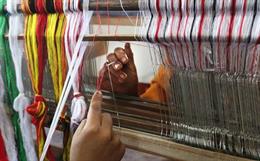Prologue to the Argument
Why are the roads inside the Infosys' campus so good andthose outside are terrible? These are the beginnings of the recent muchcelebrated book, "Imagining India," by Infosys' co-founder Mr.Nandan Nilekani. This shows that the exponential growth in the informationtechnology sector alone is not enough for developing India. These alarmingwords clearly emphasize the need for inclusive growth. No one would argue thatthe IT revolution has played a significant role in the economic prosperity of India. It is quite revealing to hear from the person who was at the center of it all that India needs growth in all sectors. Mr. Nilekani's views are in par with those of manyleaders in India like Mr. Nayarana Murthy that we need a comprehensive growththat focuses on education, good governance and infrastructure among others. Thisinclusive growth needs to include innovation as an important component.Innovation has been a key player in the boom of the Indian informationtechnology industry. In fact, the creation of this sector that could delivervalue to its customers, more specifically international ones at a less cost ina timely manner is itself an innovation, which basically helped with the growthof the IT industry in India. Such innovations are also needed in other sectorsin India such as manufacturing and agriculture. In fact, the biotechnologyrevolution in cotton farming with the infusion of Bollgard cotton seeds hasincreased the cotton production. This biotech revolution has put India in the international cotton map and is now the second largest producer. The Indiantextile industry needs innovation to sustain and grow. In other words, thereneeds to be IT revolution. Here, IT refers to "Indian Textile Industry."This new IT revolution should lead to process and product diversification.Technical textiles should be a part of this diversification equation of theIndian textiles industry.
What is the Need for the New Diversification Equation?
Simply put, the changing economic order of the world, shiftin the demographics in India and more importantly, the erosion of thecompetitive advantage India has enjoyed over the past decades in terms of cheaplabor with regard to the manufacturing of commodity textiles are clearlycompelling for the Indian textile sector to undertake the much neededrevolution, i.e., IT revolution.
Why is the IT Revolution Necessary?
To answer this query, we have to look at no other place thanthe current India in terms of its political and economic scenarios. We justwitnessed an orderly democratic election, which shows the stability of India. This political stability is extremely important in the globalized world. In therecent election, 24% of the electorate is less than 35 years of age. Thisshowcases the young population of India as against the ageing population of China. The stable democracy and the free market policies will attract foreign investmentsinto the country. Such foreign direct investments are extremely important toimprove the infrastructure, health care and other important sectors. Although,the current global economic situation will preclude such investments, it ishoped that the economy will turn around by early to mid 2011. This economicturnaround will be beneficial and at the same time, export markets in the US and Europe will not be same as those that were in the early 2000s because of the changinggeopolitical and economic situations. The potential of economic recovery and theopportunities that will arise with the diversification of the commodity textilesector should pave way for the growth of technical textiles sector. In orderfor this sector to grow, both technical and financial infusions are necessary.Such investments from foreign entities can happen if there is basicallygoodwill among the parties involved. The stability of India with regard to its democratic system and young population give positive image for India. Coincidently, while I was penning this article, I listened to Fareed Zakaria's GPSSunday Show in CNN, where Fareed interviewed Mr. Nilekani. In a question, Fareedpointed out about the eight lane infrastructure superiority of China over India. In his reply, Nandan Nilekani asserted the strength of India in terms of englishspeaking and educated young population over the ageing Chinese society.Additionally, he added that Indias democracy amidst all its pitfalls is astrategic asset for India.
To add to Mr. Nilekani's views on India's strength, I personally feel, the information technology revolution in India has created enormous awareness among the Indian population. In fact, India is one of the societies, where we have largest use of mobile phones. This transformation in India has created enormous opportunities for its people hitherto unexplored. The free market economy, which was initiated in 1991, spearheaded the growth of the middle class population. This setting is ideal for the growth of technical textiles in India. The changing economic set-up which aided the burgeoning of the private sector has helped to boost the middle income population as well. Additionally, the end of the MFA quota system opened-up enormous opportunities for the conventional textile sector since January 2005. Indian textile sector had a good ride until 2007, when Indian rupee became strong against the US dollar creating a slump in export earnings. During the end of 2007, recession was officially beginning in the US, which is still lingering. This economic downturn has spread to many of the developed nations, resulting in the slowdown of textile exports from India and China. The current economic situation is providing opportunity for the Indian textile sector to start strategizing towards diversification beyond the conventional sectors.
The sub-prime mortgage crisis, credit crunch and high unemployment rate prevailing in the US and Europe are all having direct impact on the customer confidence and the availability of disposable income in the developed economies. These economic woes impact the export dependent Indian textile sector. Recent report from the US Bureau of Economic Analysis shows that the disposable income in the US contracted by 1.8 billion US dollars. Additionally, the US GDP contracted by 6.1% during the first quarter of 2009. To add insult to the injury, the unemployment rate in the US is all time high in the past 25 years at 8.9 percentage. Even States that have conservative fiscal policies such as Texas are not immune to the economic downfall. Recent data from the Texas Workforce Commission shows that the unemployment rate in Houston area is around 6 percentage. Who would have thought that the oil capital in the US will have unemployment rate of 6.1% when the cost of gas is going up averaging around 2.3 US dollars per gallon. The economic situation is getting negatively impacted with the proposed shutting down of nearly 2000 dealerships of General Motors and Chrysler in the US starting this summer. All these negative aspects affect the jobs and hence the import of non-essential textile products in the US and Europe. This will have direct effect of textile exporting countries such as China, India, Thailand, Vietnam, Bangladesh and Indonesia. As textile imports into the developed nations are non-essential items, the export market will be drastically curtailed at least until the economy rebounds in early to mid 2011. Therefore, it is extremely important for the Indian textile industry to chart strategies for diversifying into value-added products, i.e., technical textiles.
What are Technical Textiles-Why the Fuss?
Two main points, which make technical textiles uniquely different from the commodity textiles, are:
1) they can cater to the growing needs of both the domestic and export markets and
2) some major products are single use items and hence the volume requirement will be more.
Some of these products include: baby diapers; feminine hygiene products and wipes. Technical textiles can be generally defined as value-added textile products which are used to enhance the life style of the people and also improve their way of living. These include textiles that go into the human body, roads, aircrafts, automobiles, filters, etc. Technical textiles can be fibers, yarns, woven fabrics, knits, nonwovens and combinations therefore. Unlike commodity textile products, technical textiles are based on their value, predominantly driven by their performance. This necessitates the need for delivering products based on specific customer needs and will involve close interactions with the customers in the manufacture of high performance textiles. In general, technical textiles sector is a knowledge intensive sector that is driven by constant innovation. Because of the nature of the product, knowledge dependency, research and development requirement, this sector is well suited for small and medium size industries. In addition, the growth of this sector will be greatly enhanced if there is an active partnership between the research and development infrastructure and the industry.
Compelling Reasons for Energizing the Technical Textiles Sector in India
- Technical textiles sector is directly dependent on the economic growth and prosperity of a nation. As a nation grows, historical evidence is that this sector will grow. India is a developing nation and hence there will be a win-win growth.
- GDP growth is strongly tied-up with the growth of nonwovens and technical textiles sector. India is expected to grow around 6 percentage. As a thumb rule, the relationship between the GDP growth and the technical textiles sector is linear. However, the current growth pattern of this sector in the west defies this thumb rule in a positive fashion. In the US and Europe, where the GDP growth will be less than 1 percentage or even in negative rate, this industry is expected to grow around 4-5 percentage. This means, Indian technical textiles sector should grow more than 6 percentage. My prediction is that this growth will be near a double digit one.
- The technical textiles industry is directly related to the growth in middle class population. It is reported that by 2030, the middle class population in India will reach nearly half a billion. This should certainly have positive impact on the Indian technical textiles industry.
- The changing nature of the conventional textile industry will influence the Indian technical textiles growth. Indian textile basket is highly titled towards cotton. The lack of availability of raw cotton for the textile industry at a sustainable price is already putting enormous stress on the industry. The lack of raw material such as cotton and the skilled labor will slowly erode the competitive advantages of the Indian conventional textiles sector. This will make the industry to re-focus and plan for seizing new opportunities such as diversification into value-added products.
- Globally, due to the need for biofuels and the profit advantages, cotton producers are switching to corn and soybeans. This is particularly causing decline in the acreage in cotton production. According to the United States of Agriculture, the US will plant 7 percentage less of cotton in 2009 compared to 2008. This will slowly result in the decrease in the availability of cotton and carry over stock. The lack of supply will push markets upward rising the price of cotton to trade in upper 60 cents per pound in 2009 and 2010. The hike in cotton price may have its own ramifications for the global commodity textile sector.
- It should be noted that the single most important competitive that India has with regard to its textile business is the availability of cheap and skilled labor. This is already eroding. A recent survey by Werner International has shown that countries such as Indonesia, Pakistan, Vietnam and Bangladesh can offer cheap labor at a cost relatively less than India. For example, Werner Internationals data show that the hourly rates in US dollars are 0.85 (India), 0.58 (Pakistan), 0.57 (Vietnam) and 0.31 (Bangladesh). Also we have to note that we are only slightly less than those of China ($1.44/hour) and Egypt ($1.22/hour). This useful report should send us a timely alarm signal that the comparative advantage of India in terms of labor is slowly going away.
- Technical textiles industry can cater to both domestic and export markets. This gives a safety net for the Indian textile industry.
- The growing middle class population with dual employment in each household will necessitate the need for lifestyle enhancing products. This will certainly require a strong homegrown technical textiles base, which can cater to the needs of growing middle class.
Epilogue for the Argument
The shift in the consuming power of rich nations and the enhancement of savings rates will be negative factors for the conventional Indian textile industry. The lack of availability of raw materials and skilled labor force will make the Indian textile industry regroup and look for opportunities beyond the conventional fiber to fashion supply chain. Here comes the technical textiles sector. As of today, commodity textile sector does not have deeper understanding on the marketing aspects of technical textiles products. Technological awareness has been infused over the past few years. A concerted effort is needed to build confidence among entrepreneurs to start thinking seriously on how to grow this industrial base in India. As Nandan Nilekani puts it, India has a demographic dividend, i.e., educated youth, which is ideal for the technical textiles sector as these people are the customers and supporters of this industry in India.
The information expressed are personal views of the author. Here 'I' refers to him.
The article was originally published in Textile Review, June 2009
About the Author
The author is associated with Nonwovens & Advanced Materials Laboratory, Texas Tech University, Lubbock, Texas, USA.







